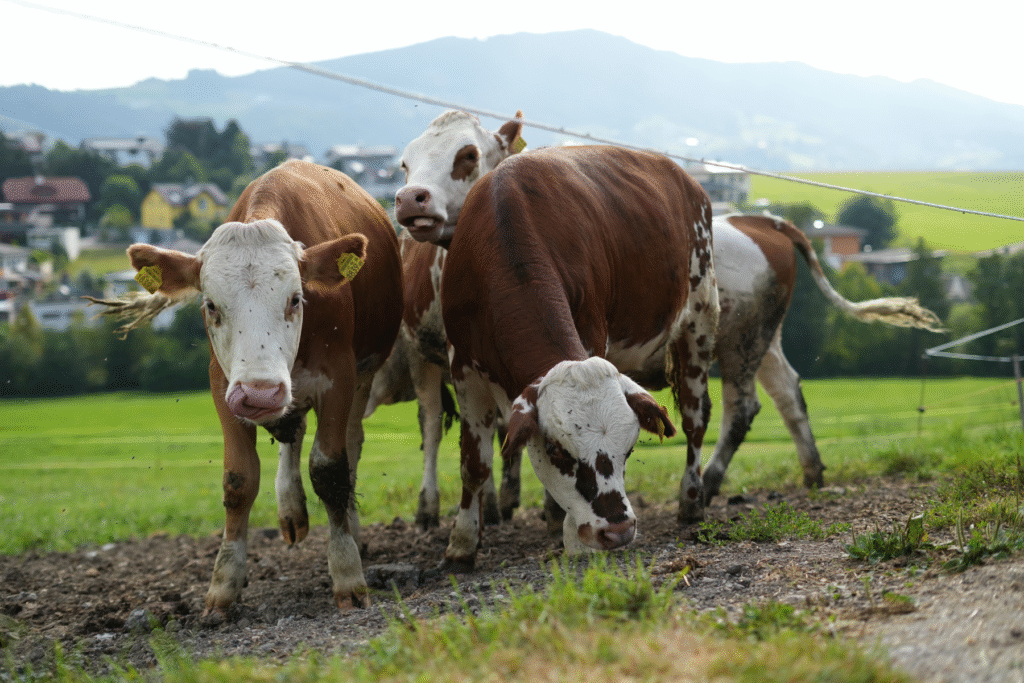
In the international trade of agricultural products, Austria is increasingly falling behind—imports are growing faster than exports. The deficit exceeded the one-billion-euro mark in the first half of this year. Compared to the same period last year, the negative balance in Austria’s agricultural foreign trade widened sharply from €885 million to €1.3 billion, according to data from AMA Marketing. “Germany remains our core market,” said the Agrarmarkt Austria subsidiary.
The food industry continued to post a trade surplus of just over half a billion euros in the first half of 2025. “We export more processed foods than we import,” said Katharina Koßdorff, managing director of the Food Industry Association within the Austrian Economic Chamber (WKÖ), at a joint press conference Monday with AMA Marketing CEO Christina Mutenthaler-Sipek. However, preliminary figures show that the surplus shrank by more than a quarter year-on-year—from €729 million to €539 million. “The Austrian industry is stagnating—and likely for the second consecutive year,” Koßdorff said. “Export volumes are flat, import volumes are growing.”
Imports Rising Faster Than Exports
In terms of value, food industry exports rose by 3.1 percent to €5.4 billion in the first half of 2025, but imports increased much more strongly—by 7.9 percent to €4.8 billion. The surplus is steadily shrinking. “This shows that Austrian food producers are also losing price competitiveness,” Koßdorff said.
The WKÖ cited imports of agricultural raw materials such as cocoa, coffee, tea, rice, spices, and tropical fruit—items not sufficiently available domestically—as well as high production costs in Austria. “Overregulation plays a role,” Koßdorff noted. Costs related to energy, labor, and bureaucracy were particularly burdensome. “With this heavy cost backpack, companies struggle to compete internationally.” The association called for lower location costs. “State price regulations or market interventions are the wrong path,” the industry said, arguing instead for lower energy and labor costs and less bureaucracy.
Overall agricultural exports rose in value by 4.1 percent to €8.7 billion in the first half of 2025, but again lagged behind imports. In terms of volume, exports actually fell by 3.2 percent to 5.2 million tons. The majority of goods are sold to European countries. Exports worth nearly €7 billion go to the EU—€3.4 billion of that to Germany. “In 2025, we expect growth in value but a partial decline in volume,” Mutenthaler-Sipek said, looking at the full year.
Trade Surplus With Germany
“Eighty percent goes to the EU, 20 percent to non-EU countries—Germany leads by far,” Koßdorff reported. “Germany remains our core market—we will continue focusing on Germany, but also on neighboring countries and niche markets,” Mutenthaler-Sipek affirmed. She referred to the world’s largest agricultural trade fair, Anuga, taking place in Cologne from October 4 to 8, where Agrarmarkt Austria Marketing and Austria’s dairy industry are exhibiting on over 600 square meters.
“For us, Germany is very important, and we’ve had a positive agricultural trade balance there since 2020,” said Mutenthaler-Sipek. In the first half of 2025, the bilateral surplus amounted to €190 million. Exports to Germany increased in value by 5.5 percent to almost €3.4 billion, while imports from Germany rose by 5.2 percent to just under €3.2 billion.
The beef market is currently facing a significant supply shortage. According to AMA Marketing, extraordinary developments occurred: beef exports fell by more than a quarter in volume in the first half of 2025 amid sharp price increases, according to RollAMA data. However, export revenues rose by 5 percent, “driven by prices,” said Mutenthaler-Sipek. “There is less on the market. Many farms are closing.” She added that generational change is a major issue in cattle farming—not only in Austria but also in Germany, France, Ireland, and Spain. Animal diseases and rising feed and energy costs have also contributed to the shortage.
USA Drops Out Of Austria’s Top 5 Export Markets
After Germany, Italy remains Austria’s second-largest export market for agricultural goods. Exports there rose 3.2 percent in the first half of the year to about €907 million. They were followed by Switzerland (€330 million), Hungary (€324 million), and the Netherlands (€305 million). The USA dropped out of the top five.
“The food companies have built production lines in the US and serve the market from there,” said Koßdorff. “Secondly, it’s the tariffs—we have an additional duty of 15 percent—making it even more expensive for exporters to compete in the US.” Over the years, exports to the US have fallen significantly. “The volumes remain in Europe and put pressure on the market here.” Overall, tariffs have never boosted trade. “They have always been a means of protectionism—to close off markets.”

